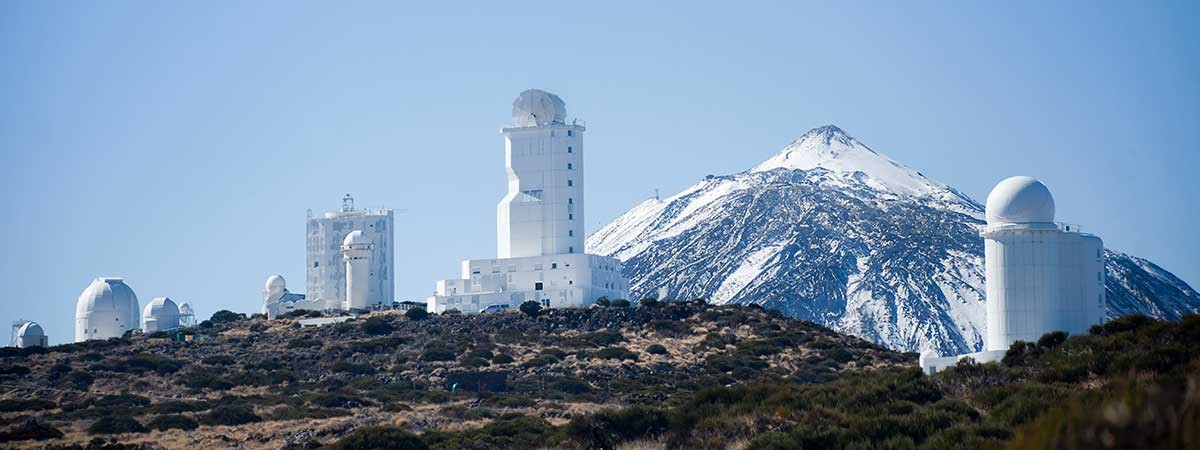To study the activity of the sun, different telescopes are needed than those used for observing the night sky. One such telescope is the vacuum telescope. The path of the captured sunlight remains undisturbed in its vacuum chamber.
When astronomers observe the stars using optical devices, they are grateful for every single incident photon. The ever-larger mirrors of their telescopes have the primary purpose of capturing as much of the sparse light as possible that has made the long journey from distant galaxies to us. They do not need to worry about any side effects of these weak rays.
But there is one star in particular where different rules apply: the sun, which floods our planet with the high-energy radiation that makes life here possible in the first place. Solar astronomers therefore have to deal with a superabundance of light rays, from which they have to filter out the desired images by means of technical tricks.
A key problem here is heat. The captured light rays focused by lenses bring considerable amounts of energy with them. This would heat the air in an ordinary telescope and make it rise. Since the refractive index of the air changes with its temperature, the passing light beam would be deflected by the turbulence inside the device. The captured image would be blurred and no longer informative.
In order to prevent this effect, the vacuum tower telescope (VTT) was developed for solar observation. One of these telescopes is the VTT of the Kiepenheuer Institute for Solar Physics (based in Freiburg) in Tenerife. Because it needs to be as far away as possible from the turbulent layers of air above the ground warmed by the sun, it is housed in a 38-meter-high tower. In order to further minimize the movement in the ambient air, the tower is painted in brilliant white. This means that it absorbs the least possible heat radiation itself.
Two pivoting mirrors on the roof of the tower capture the sunlight. They direct the light into a vertically positioned pipe where the telescope is located. This chamber is 21 meters long and has a diameter of 1.80 meters. Following annual maintenance work, the chamber is evacuated to a vacuum level of less than 0.5 millibar each time using two vacuum pumps connected in series.
Thanks to the length of the chamber, the focal point of the telescope is in vacuum. The penetrating heat radiation cannot generate any air turbulence there, which precludes optical streaks due to heating. Astronomers use the VTT, among other things, to obtain detailed images of sunspots. Their activity has a direct effect on the Earth's magnetic field. Among other things, they can also influence the function of electrical devices and equipment.

Clear View of the Sun
Vacuum enables precise observation
What effect do sunspots have on our everyday life?
In addition to its light, the sun also sends a constant stream of charged particles into space. This "solar wind" incessantly confronts the earth's magnetic field and is fortunately deflected by it. If this were not the case, this particle storm would hit the earth's surface and extinguish all life here. However, the solar wind is not always equally strong. Its formation is influenced by the magnetic field of the sun. Its fluctuations result in a particularly large number of sunspots forming on the surface of the sun every eleven years. They amplify the solar wind by additional particle emission, which can grow into "solar storms". On March 13, 1989 one such storm paralyzed the electricity grid of the Canadian province of Quebec within 90 seconds and caused damage amounting to more than a billion dollars.
In addition to its light, the sun also sends a constant stream of charged particles into space. This "solar wind" incessantly confronts the earth's magnetic field and is fortunately deflected by it. If this were not the case, this particle storm would hit the earth's surface and extinguish all life here. However, the solar wind is not always equally strong. Its formation is influenced by the magnetic field of the sun. Its fluctuations result in a particularly large number of sunspots forming on the surface of the sun every eleven years. They amplify the solar wind by additional particle emission, which can grow into "solar storms". On March 13, 1989 one such storm paralyzed the electricity grid of the Canadian province of Quebec within 90 seconds and caused damage amounting to more than a billion dollars.